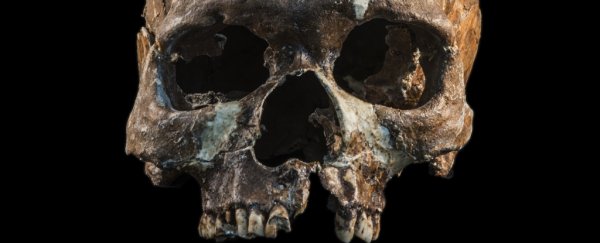They were called the Hòabìnhian: an ancient society of hunter-gatherers who populated Southeast Asia for some 40,000 years, until the dawn of agriculture around four millennia ago.
When the farms came, the age-old ways of these prehistoric foragers disappeared into history, but it's never been settled how their time on Earth drew to a close. Did the indigenous Hòabìnhian adopt agriculture, or did a wave of migrating farmers from China overrun their ancient traditions?
Neither of these two longstanding hypotheses reflects the whole truth, according to a new international study led by evolutionary geneticist Eske Willerslev from the University of Cambridge in the UK.
"Our research spanned from the Hòabìnhian to the Iron Age and found that present-day Southeast Asian populations derive ancestry from at least four ancient populations," explains one of the team, ancient genetics researcher Fernando Racimo from the University of Copenhagen in Denmark.
"This is a far more complex model than previously thought."
For their investigation, the researchers extracted DNA from ancient human skeletal remains sourced across Malaysia, Thailand, the Philippines, Vietnam, Indonesia, Laos, and Japan – and dating back as far as 8,000 years.
In total, 26 ancient human genome sequences were studied – 25 from Southeast Asia, one from Japan – and compared to the DNA of people currently living in Southeast Asia.
The results suggest the establishment of agriculture and the migratory record of peoples into and out of Southeast Asia was both messier and richer than existing explanations ever contemplated.
"Neither [simple] interpretation fits the complexity of Southeast Asian history," the team writes in the study.
"Both Hòabìnhian hunter-gatherers and East Asian farmers contributed to current Southeast Asian diversity, with further migrations affecting islands in South East Asia and Vietnam."
A separate study led by researchers from Harvard University – and published alongside Willerslev's research in Science – also uses DNA analyses to confirm how multiple, major waves of migration affected the genetic makeup of people in Southeast Asia over the past 50,000 years.
Between them, the results don't just settle some of the longest-standing controversies in Southeast Asian prehistory, they also break new ground in terms of evolutionary genetics in this part of the world – a region that isn't ideally suited to preserving DNA, due to the damaging effects of its hot, humid climate.
"We put a huge amount of effort into retrieving ancient DNA from tropical Southeast Asia that could shed new light on this area of rich human genetics," explains Willerslev.
"The fact that we were able to obtain 26 human genomes and shed light on the incredible genetic richness of the groups in the region today is astonishing."
The findings are reported in Science.
